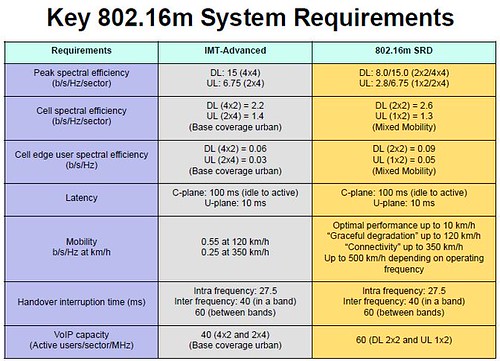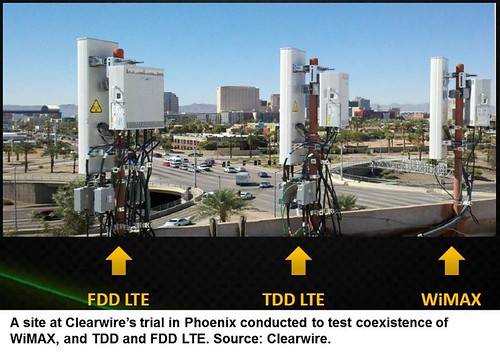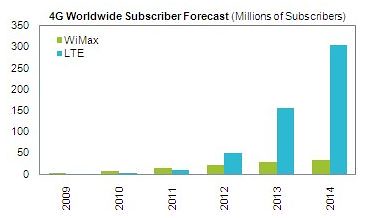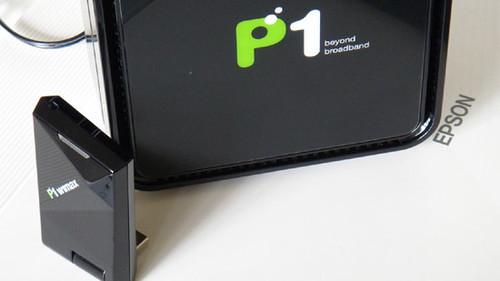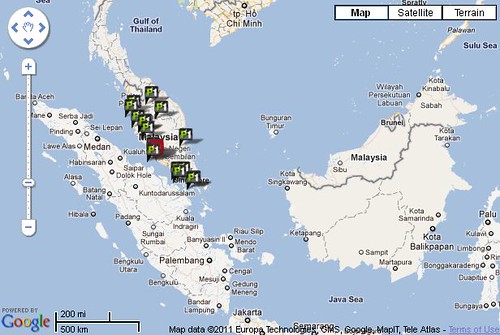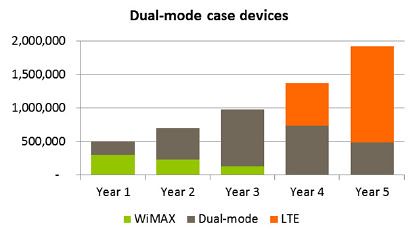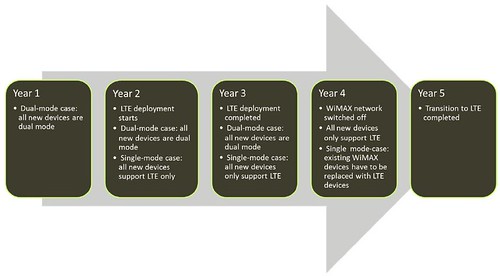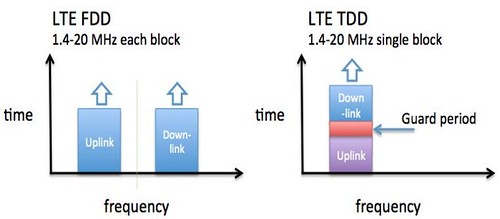Do mobile phones cause cancer? The debate has been raging for years, and we’ve covered it
several times on this blog.
Today, the International Agency for Research into Cancer (IARC), which is part of the World Health Organisation – had their say. Over the last week, they convened a panel of 31 experts to look at the available evidence. Their verdict: “radiofrequency electromagnetic fields” – the sort given off by mobile phones – belong to “Group 2B”, which means that they “possibly” cause cancer in humans.
What does that mean?
It means that there is some evidence linking mobile phones to cancer, but it is too weak to make any strong conclusions. Specifically, IARC’s panel said that the evidence that mobile phones pose a health risk was “limited” for two types of brain tumours – glioma and acoustic neuroma – and “inadequate” when it comes to other types of cancer.
The Chairman of the group, Dr Jonathan Samet, said, “The conclusion means that there could be some risk, and therefore we need to keep a close watch for a link between cell phones and cancer risk.”
IARC classifies different things according to whether they are likely to cause cancer, from tobacco to viruses to certain jobs. They are the gold standard for this sort of thing. They have five possible categories of risk:
Group 1 is the highest, reserved for things like smoking, asbestos, alcohol and so on. It means that there’s extremely strong evidence that the thing in question causes cancer.
Group 2A includes things that are “probably carcinogenic to humans”. Here, the evidence is “limited” in humans, but “sufficient” from animal studies.
Group 2B – this is the one that mobile phones now fall under – means something is “possibly carcinogenic to humans”. It means there is “limited evidence” that something causes cancer in people, and even the evidence from animal studies is “less than sufficient”. Group 2B means that there is some evidence for a risk but it’s not that convincing. This group ends up being a bit of a catch-all category, and includes everything from carpentry to chloroform.
Group 3 means that something is “not classifiable as to its carcinogencity to humans”. This means that the evidence is “inadequate in humans or “inadequate or limited” in animals. Usually, there just haven’t been enough studies to say either way.
Group 4 means something probably doesn’t cause cancer in humans. So far, there is only one chemical – caprolactam – in this group. People jokingly take this to mean that everything causes cancer but it simply reflects the fact that IARC focuses its attention on things that could potentially pose a health risk.
Where does the evidence come from?
Even though this topic gets a lot of press attention, there have been a relatively small number of studies on mobile phones and cancer. Most of these are “case-control studies” – they compare people who already have cancer (cases) with healthy people (controls), and ask them about how they used their phones in the past. These studies include the InterPhone study, an international collaboration of scientists from 13 countries, and work by Lennart Hardell’s group at University Hospital, Orebro.
So far, only one Danish study has actually followed a group of healthy people (around 420,000 of them) to see if their use of mobile phones affected their future risk of cancer.
What does the evidence say?
A smaller number of publications, mostly from the Hardell group, have found associations between mobile phones and brain cancer risk. But the majority of papers, including those from InterPhone and the Danish study, have found that mobile phone use does not increase the risk of brain cancer, or any other type of cancer, for at least 10 years of use.
To give you an idea of the evidence to date, here are two images that represent the studies on mobile phones and glioma brain cancers up to 2009 (taken from this paper). The top one shows the effect of short-term use (less than 5 years), and the bottom one deals with long-term use (more than 5 years). Each dot shows the result from a single study. If it’s on the horizontal line, there is no effect. If it’s above or below the line, this suggests that phones might increase or reduce the risk of cancer respectively.
The bars above and below the dot are important – they represent the “confidence interval”, which indicates how reliable the result is. If the bars cross the horizontal line, this means the result is not statistically significant. It could have been down to chance, or bias. As you can see, only one study out of 14 found the mobile phones significantly affect the risk of cancer.
The dot that’s second from the right (labelled “pooled estimate”) represents the combined results from all the studies. Again, you can see that it’s pretty much sitting on the line, which suggests that mobile phones do not affect the risk of cancer.

click to enlarge
Some studies have suggested that people have a higher risk of brain cancer specifically on the side of the head that they say they hold their phones to. However, many of these studies have also reported either no overall increased risk of cancer, or a lower risk of tumours on the other side of the head.
Scientists disagree as to whether this “side-of-head effect” is real. If phones were really increasing the risk of brain cancer on one side of the head, you would still expect to see this reflected in the overall result. Alternatively, the result could be due to bias, because people inaccurately remembered how they used their phones (see below). Nor is it clear if people actually hold their phones consistently to one side of their heads.
What are the weaknesses of these studies?
All the existing studies suffer from similar problems.
- Changing technology. Mobile phone technology has also changed considerably over the last decades and it is not clear if studies based on use of old models will apply to modern ones.
- Assessment problems. There still are no clear ways of assessing someone’s actual exposure to mobile phone radiation. Instead, studies use questionnaires to work out whether and how people use mobile phones. These questionnaires rely on people accurately remembering their past mobile phone use years or decades ago. In some of the Hardell studies, a third of patients received help from relatives in completing the questionnaires (compared to just one in ten controls). In one case, the next-of-kin of deceased patients estimated how often their loved ones used their phones.
- Recall bias. It’s not clear if the replies to these questionnaires are accurate – a problem known as “recall bias”. Answers might be biased because people have heard about mobiles and brain cancer in the media, because brain cancer can distort memory, or simply because people misremember things that happened a long time ago.
The individual studies have drawn more specific criticisms.
The Danish study relied on subscriber records instead of questionnaires. However, there are concerns that subscribers aren’t always the ones who use the phones, and that this method excludes corporate users, who could use their phones heavily.
For example, the InterPhone study has been criticized for using unrealistic definition of “regular users” and having low response rates to its questionnaires. The authors have also disagreed as to how their results should be interpreted.
The Hardell group has been criticised for publishing the same data in multiple papers, inconsistently reporting data such as sample sizes, and having implausibly high response rates to its questionnaires.
The abstracts of their papers often highlight statistically significant links in very specific groups of people, while ignoring overall negative results. These types of analyses are difficult to interpret – if you split a sample far enough, you end up with small numbers of people in each group and greater odds of finding a positive result simply through chance.
Are there conflicts of interest?
The mobile phone industry has provided funding for the InterPhone study and the Danish study. In both cases, funds have been administered through independent, third-party organisations that are meant to act as “firewalls” to ensure the independence of the scientists. InterPhone, for example, received 19.2 million euros of funding. 5.5 million of this total came from industry sources, and was either administered through the International Union for Cancer Control, or collected via taxes and fees from government agencies.
Lennart Hardell has not received funding from industry sources but has appeared as an expert witness in litigation cases involving mobile phones.
Could mobile phones cause cancer?
This is an important question. Scientists are confident that tobacco, alcohol or asbestos can cause cancer because they can explain how these things affect the way our cells work. These explanations are called “biological mechanisms” – they play a vital role in establishing that something causes cancer.
So far no one has been able to provide a good biological mechanism for the link between mobile phones and cancer. The “how” question is an open one. The phones give off microwave radiation, but this has millions of times less energy than, say, an X-ray and is not powerful enough to damage our DNA. They mildly heat the body, but again, not enough to pose a health risk. Other suggestions have been put forward, but none are backed by consistent evidence.
Are brain cancer rates going up?
If mobile phones increase the risk of brain cancer, the rates of this disease should be skyrocketing since mobile phone use has risen dramatically over the last few decades.
But studies in the US, New Zealand, Denmark, Norway, Sweden and Finland have found no such trends. In the UK, the incidence of brain cancer has been flat for the past few decades. A recent English study concluded that “the increased use of mobile phones between 1985 and 2003 has not led to a noticeable change in the incidence of brain cancer in England between 1998 and 2007.”
Brain cancers can take many years to develop, so it is possible that trends would only start rising after more time.
What about base stations?
Base station exposures are much less likely to affect our health than phones themselves as their emissions are many times weaker and usually well below international guidelines.
Just last year, a British study (the largest of its kind) found “no association between risk of childhoodcancers and mobile phone base station exposures during pregnancy”.The authors say the results “should help to place any future reportsof cancer clusters near mobile phone base stations in a widerpublic health context.”
What should we make of the evidence?
It is understandable that people are concerned about mobile phones, especially because they are so widely used. But so far, the published studies do not show that mobile phones could increase the risk of cancer. This conclusion is backed up by the lack of a solid biological mechanism, and the fact that brain cancer rates are not going up significantly.
However, all of the studies so far have weaknesses, which make it impossible to entirely rule out a risk. Mobile phones are still a new technology and there is little evidence about effects of long-term use.
For this reason, the UK Government advises a precautionary stance. It suggests that if adults want to use a mobile phone, they can choose to minimise their exposure by keeping calls short. It also advises discouraging children under the age of 16 from making non-essential calls as well as also keeping their calls short.
And, as IARC’s working group said, there needs to be more research.
What studies are in the pipeline?
A large study called COSMOS, including researchers from the UK and four other countries, has been set up to look at the long-term effects of mobile phone use after 20-30 years. Like the Danish study, it will recruit healthy people, measure their mobile phone use and see if this affects their health in the long-term.
The MOBI-KIDS study, involving 13 countries, has been set up to look at health effects in children.




